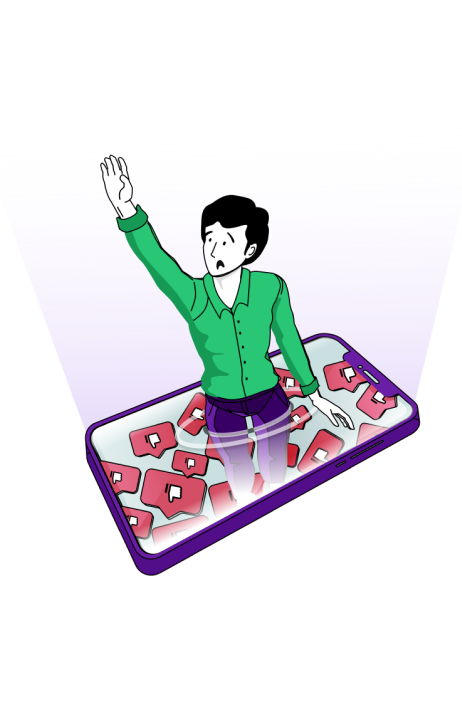
The rise of doomscrolling and its impact on mental health
With the advent of smartphones and social media, we now have access to more information than ever before. However, this also means that we are exposed to a constant stream of news, both good and bad. The phenomenon of doomscrolling, or the act of endlessly scrolling through negative news, has become increasingly prevalent in recent years. This blog will explore the rise of doomscrolling and its impact on mental health.
What is doomscrolling?
Doomscrolling refers to the act of compulsively scrolling through negative news or social media feeds, often with no end even when it is causing distress or anxiety. It has become increasingly common in recent years due to the ever-growing presence of social media and news outlets on our phones, laptops, and tablets. Unfortunately, this activity can have serious implications for mental health.
The constant barrage of bad news from doomscrolling can be hard for some people to take in, especially if it is especially upsetting or triggering for them. It can be difficult to take a break from it, especially when social media is such an integral part of our lives.
Doomscrolling can also lead to a phenomenon known as “empathy fatigue.” This is when we become desensitized to the suffering of others because we are exposed to so much negative news. Empathy fatigue can lead to feelings of apathy and detachment, which can be harmful to our mental health.
The rise of doomscrolling
The rise of doomscrolling can be attributed to several factors. Firstly, the widespread availability of social media and smartphones has made it easier for people to access news and information. With a few clicks, we can scroll through an endless stream of news articles, social media posts, and videos. This has led to a phenomenon known as “information overload,” where we are bombarded with more information than we can process.
Secondly, the 24-hour news cycle has contributed to the rise of doomscrolling. News outlets are constantly updating their websites and social media channels with the latest news. While this can be beneficial in some ways, it also means that negative news is always at our fingertips. We can access news at any time of the day, which can be overwhelming.
Finally, the COVID-19 pandemic has also played a significant role in the rise of doomscrolling. With many people working from home and spending more time on social media, the amount of negative news that we are exposed to has seen in immense surge. The pandemic has also created a sense of uncertainty and fear, which can make us more susceptible to negative news.
The impact of doomscrolling on mental health
Doomscrolling – the endless scrolling through social media and news sites to consume negative information – can have a serious impact on mental health. Studies show that doomscrolling can increase feelings of anxiety, stress, and depression. It leads to constantly comparing oneself to others, magnifying feelings of insecurity and inadequacy, and reinforces negative beliefs about the world.
Negative thoughts and feelings can also become more pervasive if doomscrolling is done regularly. This creates a cycle of negative thinking that becomes harder to break out of as time goes on. When these negative emotions take hold they can lead to further mental health issues such as difficulty concentrating, insomnia, or increased substance abuse.
How to break the cycle of doomscrolling
Breaking the cycle of doomscrolling is essential for preserving our mental health. Here are some tips to help break the cycle:
- Set boundaries: Decide on a specific time limit for using social media or reading news, and stick to it. For example, limit your scrolling to 30 minutes a day or only read the news once in the morning and once in the evening.
- Be mindful of your social media use: Pay attention to how you feel when you’re doomscrolling. Notice if you’re feeling anxious, stressed, or overwhelmed. Acknowledge those feelings and try to understand what triggers them.
- Take breaks: Give yourself a break from social media or news for a while. Go for a walk, read a book, or engage in any activity that helps you relax and take your mind off the negativity.
- Connect with others: Talk to your friends, family, or colleagues about how you’re feeling. Share your concerns and worries, and ask for support. Knowing that you’re not alone can be comforting.
Conclusion
The rise of doomscrolling is a significant concern for mental health. The constant exposure to negative news can lead to anxiety, stress, and depression. It’s essential to break the cycle of doomscrolling by limiting our exposure to negative news, being mindful of our social media use, focusing on positive news, and practicing self-care. By taking these steps, we can preserve our mental health and wellbeing in an age of constant digital information.